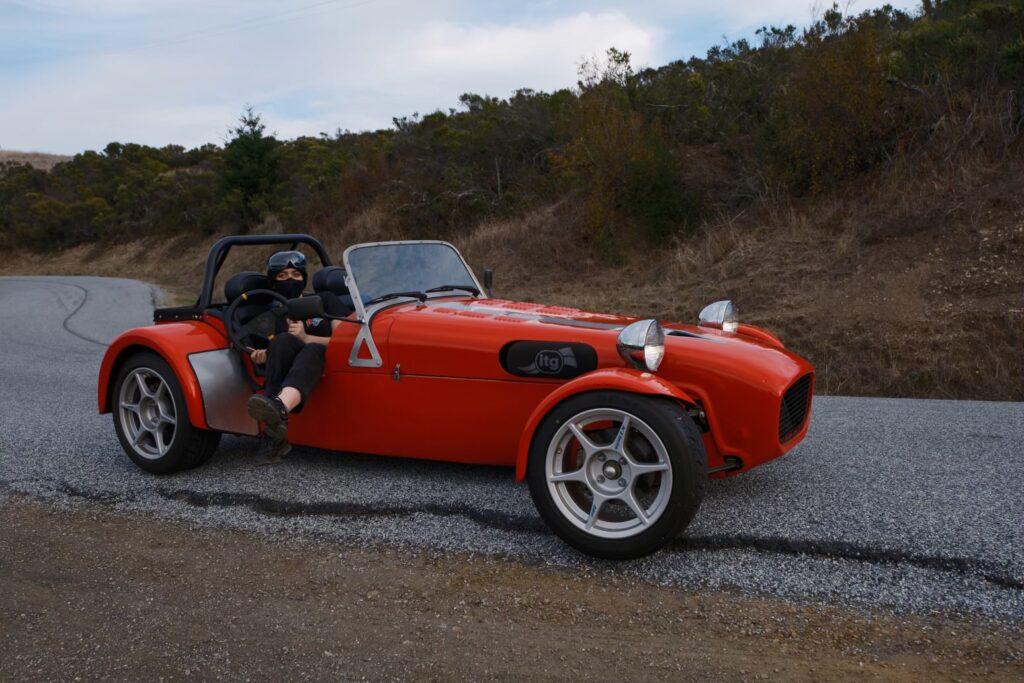At 15, after years of begging her parents to buy her a project car, Joanna Behar (who goes by Jo) finally bought a Porsche 914, a half Volkswagen and half Porsche 1970s car with pop-up headlights, her new pride and joy, after months of searching. She took help pulling out the engine and ignition, then took apart and rebuilt the engine, scrubbing paint off the exterior and sanding it down to metal. After fully stripping down the car, Jo got it repainted.
By virtue of her parents’ passion for cars, Jo grew up around classic cars, attending road rallies, classic car shows and watching her father race on weekends. At 14, she participated in her first road rally, navigating 300 miles a day with just a book of directions and her odometer.
“Each of these cars has a really interesting story,” she said. “I want to be a part of those stories and find out what those stories are.”
For instance, through taking apart her Porsche, Jo could find the narrative her car had lived thus far. It had been in an accident in the front and back. Sanding down the paint, Jo found that the Porsche had been through five different colors, which she attributes to five different owners with different visions for the car. Looking at the miles told her that her car had been loved and driven rather than cooped in a garage. The brakes had been redone, so the previous owner of the car had “drove it well,” according to Jo.
“I love seeing the different stories the cars have to tell,” Jo said. “Every little layer of paint, every little scratching dent — it’s something that happened. And the more you take it apart, the more of it you can piece together.”
Jo’s passion for restoration is uncomfortable in stagnancy — the second she grew tired, she found herself a car on Facebook Marketplace — a car that had not run since 1983. The seller in Nevada brought the car Bejar had never seen before and dropped the 1972 Datsun 240z right at her house in December. Since then, Jo has been toiling away at the car, taking the engine apart and gas tank out, finding new seats, treating rough spots, restoring the hoses and more.
“That’s basically just what I do,” she said. “I take things apart, clean them up, replace what needs to be replaced, fix what needs to be fixed and put it all back together.”
As one can guess — Jo loves driving. Since last year, she has been organizing an annual event called the Duck Tail Rally in the fall, a 2-day road rally starting in Saratoga and finishing in Pismo Beach. Cars of ages 2005 and older “drive crazy hard” on mountain roads with their book of directions to guide them.
Jo mentioned that people around school are in a passive awe of her talent, which she feels is due to the lack of students at the school who pursue trade schools as opposed to traditional, four-year universities. She doesn’t usually find other students who understand the technicalities of car restoration, making it hard to relate to others with her future profession. However, when visiting Alice’s and meeting older people, Jo receives a mix of feedback.
“When talking to older folks, it’s a really weird mix of things,” she said. “There’s some older folks who are like, ‘Oh, wow, you’re willing to do that. You’re gonna get your fingernails dirty.’ Then there’s older folks that are like, ‘Whoa, it’s really cool to see that a young woman is keeping the industry going.”
Jo is majoring in automotive restoration and plans to attend McPherson College, a trade school in Kansas well known for its automotive restoration program. It accepts only 40 students annually. Over the course of four years, the small class learns “every single technical element of restoration” — skills such as engine rebuilding, upholstery repair and more.
“It’s in the middle of nowhere, but what makes it so good is that you’re in the middle of nowhere,” she said. “There’s a lot more women going into the program now than ever.”
Though she enjoys getting “hands on, down and dirty” with her project cars, Jo also enjoys keeping her 13,500 Instagram followers up to date on her progress on her account, @a_car_gal. She found that social media is a special way for her to interact with the restoration community, learn more from others, see what people are doing with their own project cars and learn technical talk. She advised those who are interested in automotive restoration but lack resources or time — or just don’t know how to — to use social media as a tool to do research and find people whom they admire.
“The way that I describe it is: Engineering teaches you how to design an engine,” Jo said. “Automotive restoration teaches you how to build one.”


























